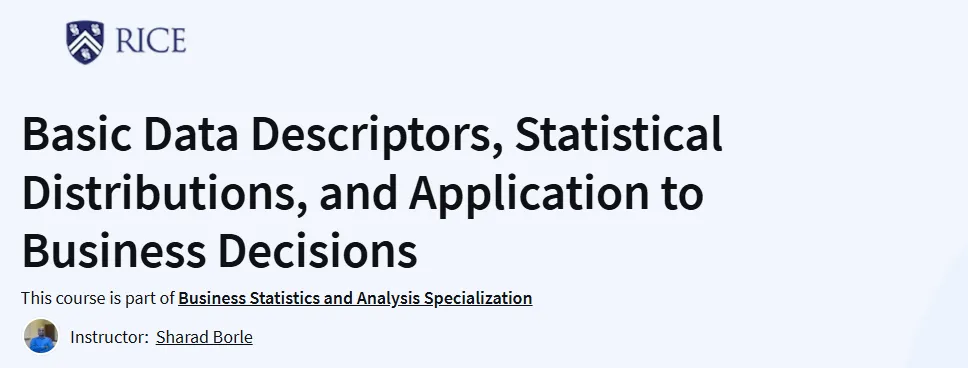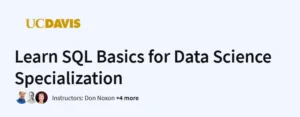What will you in the Basic Data Descriptors, Statistical Distributions, and Application to Business Decisions Course
Understand and compute descriptive statistics: mean, median, mode, range, variance, and standard deviation
Interpret data using box plots and apply Chebyshev’s theorem
Differentiate between correlation and causation; calculate covariance and correlation
Grasp foundational probability concepts and their relevance in business contexts
Apply statistical distributions (e.g., normal, binomial) to model business processes
Utilize Microsoft Excel for statistical analysis and visualization
Program Overview
Module 1: Basic Data Descriptors
Duration: ~2 hours
Introduction to descriptive statistics and their importance in summarizing data
Calculation and interpretation of measures of central tendency and dispersion
Creation and analysis of box plots
Application of Chebyshev’s theorem to understand data variability
Module 2: Descriptive Measures of Association, Probability, and Statistical Distributions
Duration: ~2 hours
Exploration of covariance and correlation to assess relationships between variables
Discussion on the distinction between correlation and causation
Introduction to probability concepts and random variables
Overview of key statistical distributions and their business applications
Module 3: Application of Statistical Distributions in Business
Duration: ~2 hours
Deep dive into specific statistical distributions (e.g., normal, binomial)
Real-world business scenarios illustrating the application of these distributions
Use of Excel functions to model and analyze business processes
Module 4: Integrative Business Applications
Duration: ~1 hour
Consolidation of learned concepts through comprehensive business case studies
Emphasis on decision-making based on statistical analysis
Final assessments to evaluate understanding and application skills
Get certificate
Job Outlook
Business Analysts: Enhance data interpretation skills for informed decision-making
Financial Analysts: Apply statistical methods to assess risk and forecast trends
Marketing Professionals: Analyze consumer data to inform strategies
Operations Managers: Utilize statistical tools to optimize processes
Students: Build a strong foundation in business statistics for future careers
Specification: Basic Data Descriptors, Statistical Distributions, and Application to Business Decisions
|





